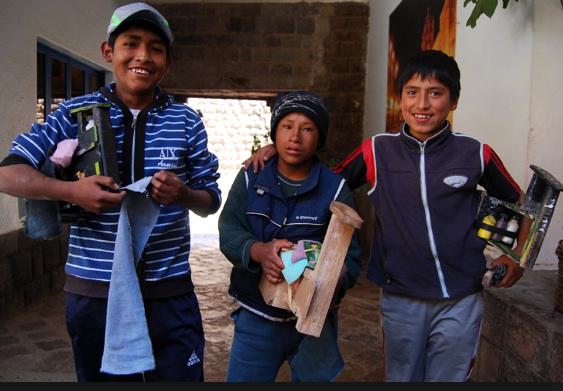What’s next in fundraising?
SOFII and The Agitator joined forces with Revolutionise to identify, foster and develop new journalistic talent in fundraising. We offered five free places for the 2014 Annual Lectures to aspiring fundraising writers, who submitted a short piece on ‘what’s next in fundraising?’ Here’s one of the winning entries…
- Written by
- Emily Henry
- Added
- December 04, 2014
When I was 16 years old, I spent part of my summer as a volunteer with a nonprofit organisation in an isolated region of the Amazon. I had heard stories about my father’s trips to Peru for years and I was finally old enough to join in.
At first glance, it was all that I expected. Brightly painted buildings lined busy streets, neighbourhood squares were full of insistent vendors and the beautiful sun highlighted an impoverished community that I had come to know through pictures and stories.
I quickly got to know the ‘shoeshine boys’. This was the group of young boys who followed tourists to make money cleaning muddied shoes or selling handmade trinkets. I no longer call these boys the shoeshine boys – these boys are my friends.
Jorge was 12 years old with a big-toothed smile that was permanently plastered on his face. When I came back from work in the evenings, he could be spotted waiting on the hotel steps in his red tank top. Here he would help me practice Spanish.
‘How do you say heart?’ I asked one day.
‘Corazón,’ Jorge replied.
‘Con razón,’ I attempted. This is Spanish for ‘with reason’.
He flashed a big smile, ‘Nooooooo,’ he said, ‘Corazón.’
I stared back blankly. I did not hear my mistake.
‘Emily,’ he said, his face changing from amused to kind. He put his hand on his heart and motioned for me to do the same. ‘Co-ra-zón,’ he continued. With each syllable Jorge patted his chest to mimic a heartbeat.
I followed, correctly pronouncing ‘Corazón’ for the first time. It was then that I recognised how incredibly connected we were. The two of us – an American and a Peruvian, a teenager and a pre-teen, a shoeshine boy and a future university graduate. Our hearts beat, we made funny mistakes when we spoke different languages and, as I found out when I left later that week, we cried when we said goodbye to something we loved. That day Jorge taught me a word but he also taught me the importance of a story. He taught me the importance of the human story.
To me, this is the future of fundraising. It is not showing statistics to potential funders; facts are important but they miss the heart of the issues. It is not explanations of the differences between the donor and the beneficiary, it is important to know the hardships people face but to tell potential funders only about poverty is to show only one side of the story.
The future of fundraising is sharing the human story. It is facts that prove there is need, it is getting potential donors acquainted with the issue and it is showing the humanity of the beneficiaries. The future of fundraising is showing the strength and weaknesses; the happiness and the sadness of those who are in need. The future of fundraising is introducing potential funders to Jorge and Emily – the beneficiary and the aid worker – who realised that they were much more similar than they were different.
The future of fundraising is realising the strength of human connection and sharing it.

















